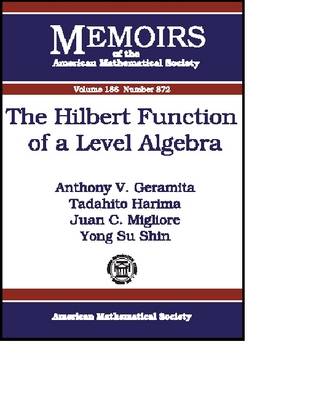Memoirs of the American Mathematical Society
2 total works
On the Shape of a Pure $O$-Sequence
by Mats Boij, Juan C. Migliore, Rosa M Miro-Roig, Uwe Nagel, and Fabrizio Zanello
Published 1 January 2011
A monomial order ideal is a finite collection $X$ of (monic) monomials such that, whenever $M\in X$ and $N$ divides $M$, then $N\in X$. Hence $X$ is a poset, where the partial order is given by divisibility. If all, say $t$, maximal monomials of $X$ have the same degree, then $X$ is pure (of type $t$). A pure $O$-sequence is the vector, $\underline{h}=(h_0=1,h_1,...,h_e)$, counting the monomials of $X$ in each degree. Equivalently, pure $O$-sequences can be characterized as the $f$-vectors of pure multicomplexes, or, in the language of commutative algebra, as the $h$-vectors of monomial Artinian level algebras. Pure $O$-sequences had their origin in one of the early works of Stanley's in this area, and have since played a significant role in at least three different disciplines: the study of simplicial complexes and their $f$-vectors, the theory of level algebras, and the theory of matroids. This monograph is intended to be the first systematic study of the theory of pure $O$-sequences.
The Hilbert Function of a Level Algebra
by Anthony V Geramita, Tadahito Harima, Juan C. Migliore, and Yong Su Shin
Published 1 March 2007
Let $R$ be a polynomial ring over an algebraically closed field and let $A$ be a standard graded Cohen-Macaulay quotient of $R$. The authors state that $A$ is a level algebra if the last module in the minimal free resolution of $A$ (as $R$-module) is of the form $R(-s)a$, where $s$ and $a$ are positive integers. When $a=1$ these are also known as Gorenstein algebras. The basic question addressed in this paper is: What can be the Hilbert Function of a level algebra? The authors consider the question in several particular cases, e.g., when $A$ is an Artinian algebra, or when $A$ is the homogeneous coordinate ring of a reduced set of points, or when $A$ satisfies the Weak Lefschetz Property. The authors give new methods for showing that certain functions are NOT possible as the Hilbert function of a level algebra and also give new methods to construct level algebras. In a (rather long) appendix, the authors apply their results to give complete lists of all possible Hilbert functions in the case that the codimension of $A = 3$, $s$ is small and $a$ takes on certain fixed values.

